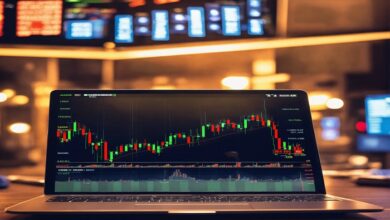Grasping the Oil Futures Curve: Contango vs. Backwardation

Embark on a journey through the intricate world of oil futures with a deep dive into the concepts of contango and backwardation. Explore the historical context, underlying factors, and real-world implications of these phenomena in the oil market. Gain insights into how understanding these concepts can help investors and traders navigate the complexities of the futures market. Additionally, if you want to learn about investments, specifically those related to the oil sector, and companies that can teach them about this topic, you may visit https://oil-pro-profit.com/.
Understanding Contango
Contango is a term frequently used in the context of futures markets, including the oil futures market. It describes a situation where the futures price of a commodity is higher than the spot price, creating an upward-sloping curve on the futures price chart. This phenomenon typically occurs when the commodity is abundant in the market or when the market anticipates an increase in supply in the future.
Several factors contribute to the occurrence of contango. One primary factor is the cost of storage. When there is an excess supply of a commodity, it often needs to be stored for future use, leading to storage costs. These costs, along with other factors such as insurance and financing, contribute to the higher futures price. Additionally, market sentiment and expectations about future supply and demand play a significant role in shaping the contango curve.
Contango has several effects on the oil market. Firstly, it can influence pricing strategies, especially for producers and consumers who use futures contracts to hedge against price fluctuations. In a contango market, producers may choose to sell futures contracts to lock in higher prices, while consumers may delay purchasing to take advantage of potentially lower spot prices in the future. Secondly, contango can impact storage decisions. Traders and investors may choose to store oil in anticipation of higher future prices, leading to increased demand for storage facilities and potentially affecting storage costs and availability.
For investors, contango presents both opportunities and risks. While it can offer opportunities for arbitrage, where investors can profit from price differences between the spot and futures markets, it also carries risks such as the potential for price declines if storage costs increase or if market conditions change unexpectedly. Overall, understanding the contango is crucial for market participants to make informed decisions and navigate the complexities of the oil futures market effectively.
Analyzing Backwardation
In contrast to contango, backwardation occurs when the futures price of a commodity is lower than the spot price, creating a downward-sloping curve on the futures price chart.
This situation typically arises when there is a shortage of the commodity in the market or when the market expects a decrease in supply in the future. Backwardation is less common than contango but is an important concept to understand in futures markets, including the oil futures market.
The reasons behind backwardation are similar to those of contango but operate in the opposite direction. For example, when there is a shortage of a commodity, such as oil, in the market, buyers may be willing to pay a premium for immediate delivery, leading to higher spot prices compared to futures prices.
Additionally, market expectations about future supply and demand can influence backwardation, with the market pricing in potential supply disruptions or increased demand in the future.
Backwardation has several effects on the oil market. It can influence market sentiment, as investors may interpret backwardation as a signal of potential supply constraints or increased demand in the future.
This can lead to speculative behavior, where investors buy futures contracts in anticipation of further price increases, potentially exacerbating the backwardation effect. Additionally, backwardation can impact supply and demand dynamics, as producers may reduce output in response to lower futures prices, further tightening the market.
For traders and investors, understanding backwardation is essential for devising effective trading strategies and managing risk. While backwardation can offer profit opportunities, such as through short-term trading or arbitrage, it also carries risks, including the potential for price reversals if market conditions change. By analyzing backwardation and its implications, market participants can make informed decisions and adapt to changing market conditions effectively.
Comparing Contango and Backwardation
Contango and backwardation are two key concepts in futures markets that reflect different supply and demand dynamics and market expectations.
Contango, characterized by higher futures prices compared to spot prices, typically indicates an abundance of the commodity and expectations of increased supply in the future. In contrast, backwardation, characterized by lower futures prices compared to spot prices, suggests a shortage of the commodity and expectations of decreased supply in the future.
One of the key differences between contango and backwardation is their impact on pricing strategies. In a contango market, producers may choose to sell futures contracts to lock in higher prices, while consumers may delay purchasing to take advantage of potentially lower spot prices in the future. In a backwardation market, producers may reduce output in response to lower futures prices, while consumers may buy futures contracts to hedge against potential price increases.
Another difference is their influence on market sentiment. Contango is often seen as a sign of oversupply and bearish market sentiment, leading to cautious trading behavior. In contrast, backwardation is viewed as a sign of supply constraints and bullish market sentiment, leading to more aggressive trading behavior.
Despite these differences, both contango and backwardation present opportunities and risks for traders and investors. Contango can offer opportunities for arbitrage and profit from storage, while backwardation can offer opportunities for short-term trading and hedging.
However, both also carry risks, such as the potential for price reversals and increased volatility. By understanding the differences between contango and backwardation and their implications, market participants can make informed decisions and manage risk effectively in future markets.
Conclusion
In conclusion, understanding the oil futures curve, particularly the dynamics of contango and backwardation is crucial for anyone looking to navigate the volatile waters of the oil market. By grasping the factors influencing these market conditions and their implications, investors and traders can make more informed decisions, manage risks effectively, and capitalize on opportunities that arise in both bullish and bearish market scenarios.




